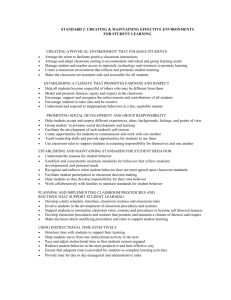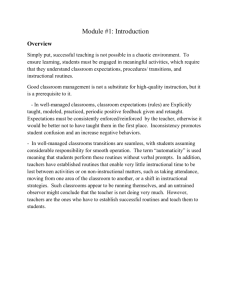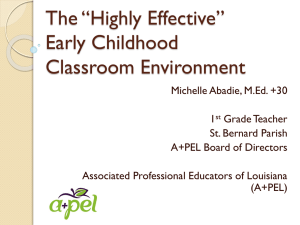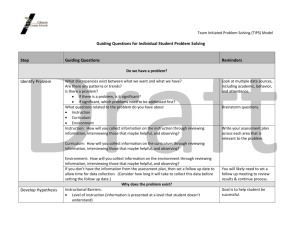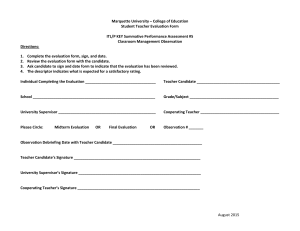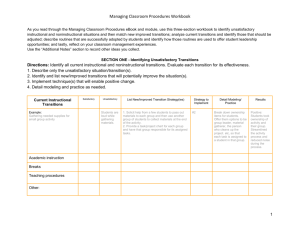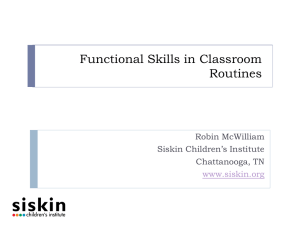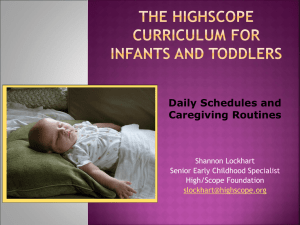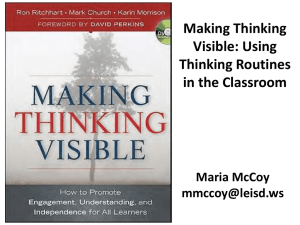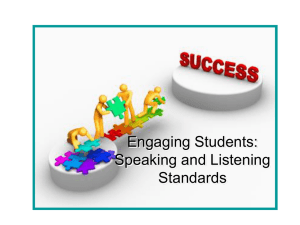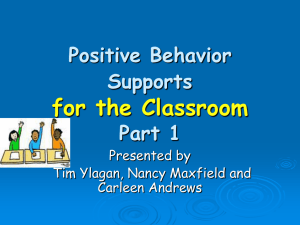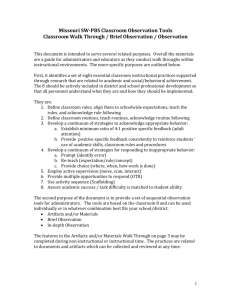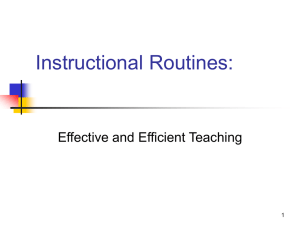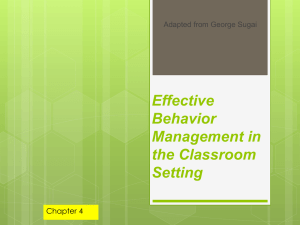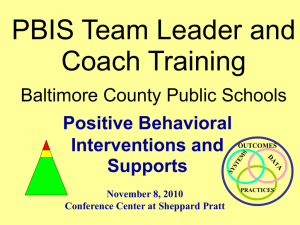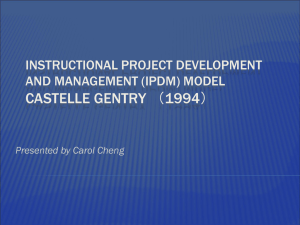PowerPoint
advertisement
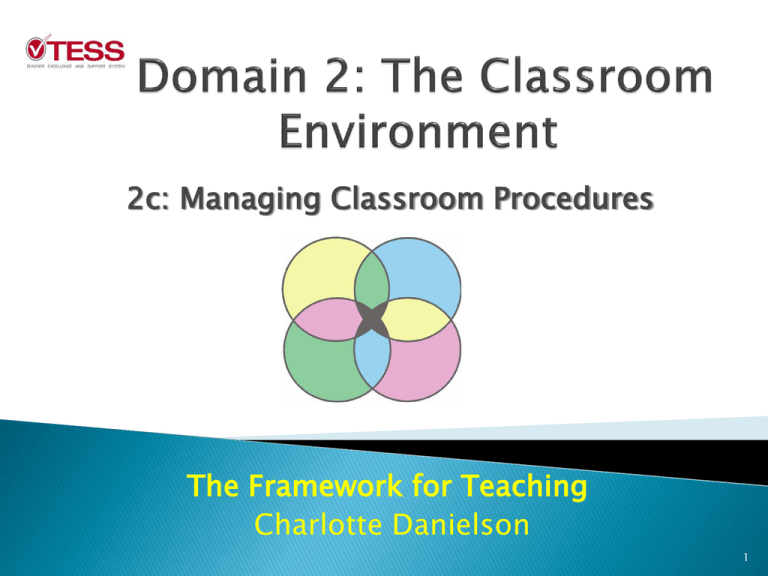
2c: Managing Classroom Procedures The Framework for Teaching Charlotte Danielson 1 Understand the elements of 2c Distinguish the difference in levels of performance Review examples of 2c behavior Identify individual levels of performance on 2c Incorporate strategies to improve individual levels of performance in 2c 2 A smoothly functioning classroom is a prerequisite to good instruction and high levels of student engagement. Teachers establish and monitor routines and procedures for smooth operation of the classroom and the efficient use of time. 3 Non-instructional tasks are completed effectively. Management of transitions between activities and materials and supplies is done to maintain momentum and maximize instructional time. 4 The establishment of efficient routines, and teaching students to employ them, may be inferred from the sense that the class runs itself. A hallmark of a well-managed classroom is students working productively in instructional groups even when not under direct supervision of the teacher. At the highest level, students themselves contribute to the use of these routines. 5 Management of Instructional Groups ▶ Much classroom work occurs in small groups Small groups enable students to work with their classmates. Small groups can discuss possible approaches to a problem. Small groups help students benefit from one another’s thinking. ▶ Students cannot be expected to automatically know how to work productively in small groups. Skills for working in groups must be taught. Students work independently in groups with little supervision from the teacher in a well-run classroom. This component centers on the procedures students have been taught for working in groups; however, 3c focuses on student engagement in groups. 6 Management of Transitions Many lessons engage students in different types of activities-large group, small group, independent work. Transitions between these different activities and grouping patterns should proceed easily and smoothly. Students move from one activity to another with little instructional time lost. Students know the process and execute it seamlessly. 7 Management of Materials and Supplies A clear indication of a teacher’s skill lies in the procedures for distribution and collection of materials. Experienced teachers have all necessary materials at hand and have taught students to implement the routines with little disruption to the flow of instruction. 8 Performance of Non-Instructional Duties Accomplished teachers are masters of multitasking. They take attendance, for example, while students are beginning a task written on the board. Where appropriate, students themselves contribute to the design and execution of routine matters, such as the lunch count or the return of permission slips for activities. Little instructional time is lost in such matters. 9 One member of each small group collects materials for the table. This observation is an indication that the teacher has established a procedure for how materials and supplies are managed in the classroom and that students follow the established procedure. 10 Roll-taking consumes much time at the beginning of the lesson and students are not working on anything. This observation demonstrates that too much class time is dedicated to non-instructional duties. Having too much instructional time lost to non-instructional duties is an indication of a lower level of performance for Managing Classroom Procedures. 11 In small-group work, students have established roles; they listen to one another, summarize different views, etc. This observation serves as evidence that the teacher has established effective practices for managing instructional groups. These observations indicate a higher level of performance. 12 Look and plan for these indicators during a lesson. Smooth functioning of all routines Little or no loss of instructional time Students play an important role in carrying out the routines Students know what to do, where to move 13 Levels of Performance Answers A. Distinguished (Level 4) B. Proficient (Level 3) C. Unsatisfactory (Level 1) D. Basic (Level 2) 14 Level 3 Proficient: Critical Attributes Students are productively engaged during small group work. Transitions between large and small group activities are smooth. Routines for collecting and distributing materials and supplies work effectively. Classroom routines work smoothly. 15 Level 2 Basic: Critical Attributes Procedures for transitions and for distribution/collection of materials seem to have been established, but their operation is rough. Classroom routines function unevenly. Small groups are only partially engaged while not working directly with the teacher. 16 Level 1 Unsatisfactory: Critical Attributes Students not working with the teacher are not productively engaged or are disruptive to the class. There are no established procedures for distributing or collecting materials. Procedures for other activities are confused or chaotic. 17 Level 4 Distinguished: Critical Attributes In addition to characteristics of Level 3 performance, Students themselves ensure that transitions and other routines are accomplished smoothly. Students take initiative in distributing and collecting materials efficiently. Students take the initiative with their classmates to ensure that their time is used productively. 18 To what extent do you: teach your students how to transition from one activity to another? have them practice the routines? give them feedback? What procedures can you teach your students so they assume responsibility for materials and supplies? 19
